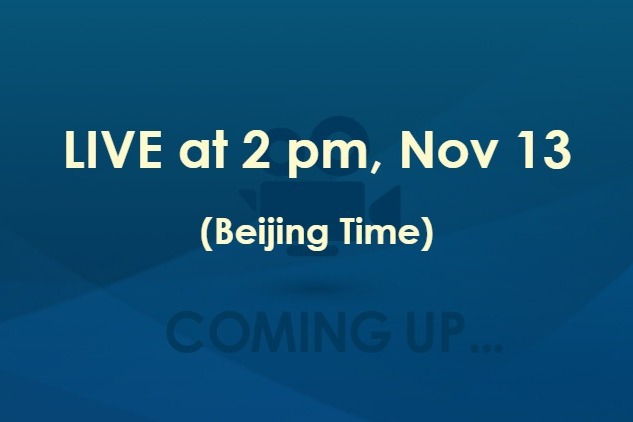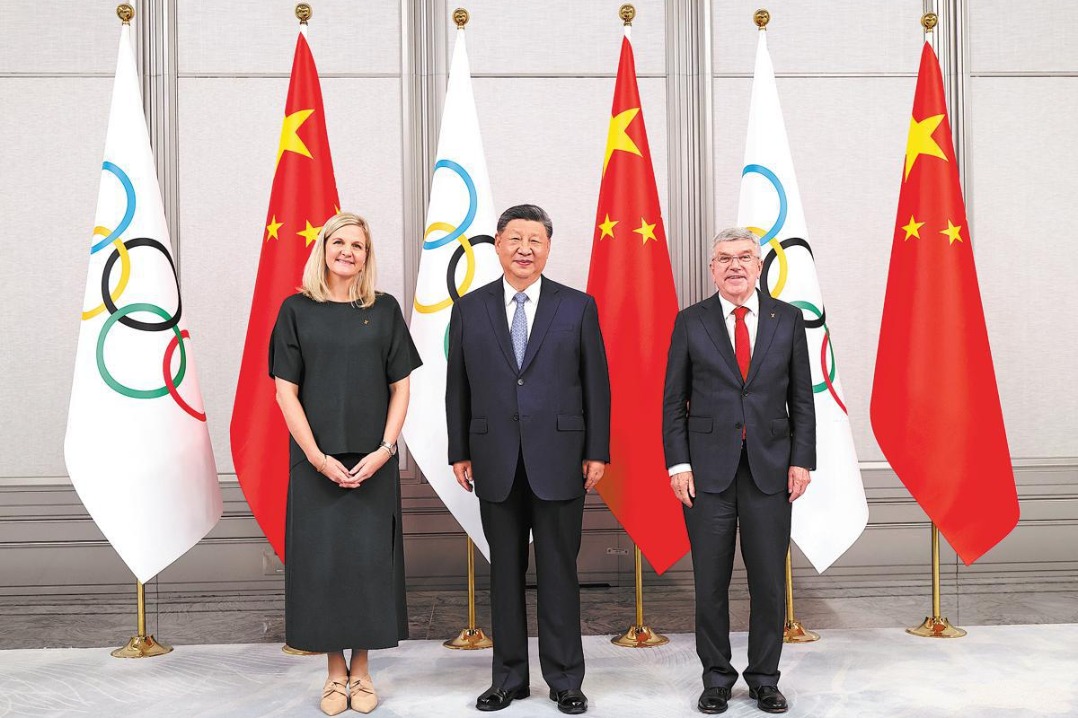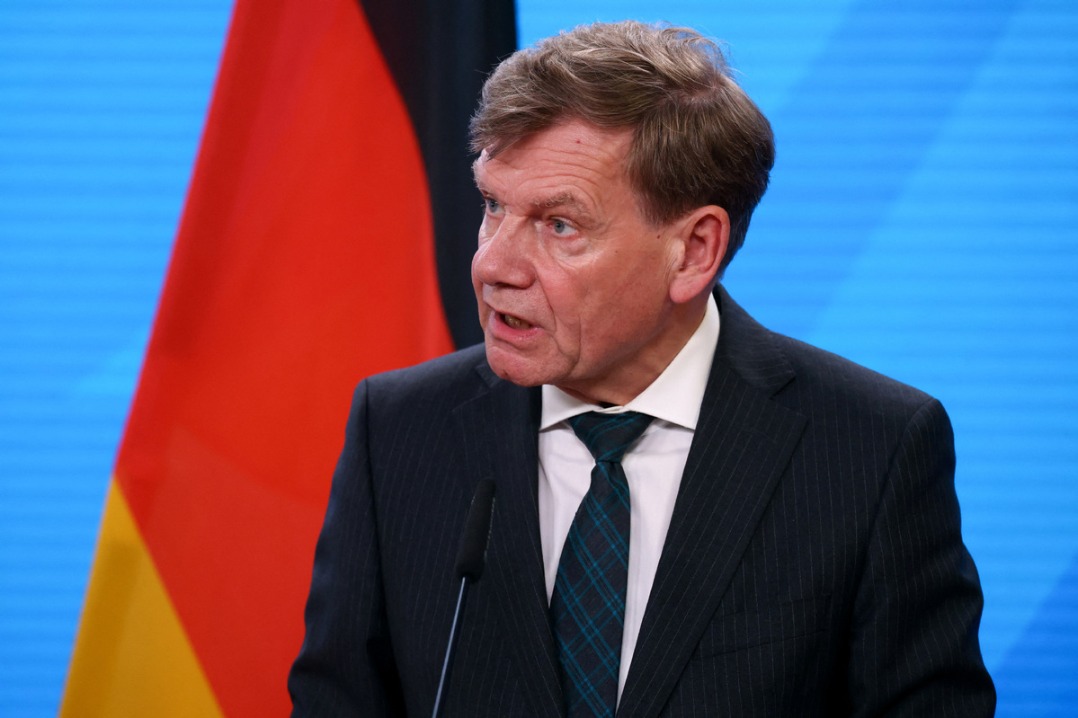Long-term pivot to the East

Arab countries' growing investment in China signals a strategic choice driven by both economic and political factors

In China-Arab economic relations, China used to be an investor in Arab countries, not the other way around. The United States has traditionally been the main investment destination for Arab countries. However, the situation has changed over the past few years, with China emerging as an increasingly attractive investment destination for Arab countries. Arab countries' investments in China have reached a level on par with Chinese investments in Arab countries.
It's worth noting that such a change is not a temporary adjustment, but a long-term strategic pivot driven by both political and economic factors.
Before 2020, there was hardly any capital from Arab states in the Chinese market. In 2021, Arab countries' new investments in China was a meager $110 million. The figure surged by nearly ninefold to $1.05 billion in 2022 and another 2.3 times to $2.3 billion in 2023, approaching or even exceeding Chinese investments in Arab countries in recent years. It only takes Arab countries three years to increase their investments in China from the ground up to be on par with Chinese investments in Arab countries.
Currently, Arab countries' investment in China is still in its infancy, with a very low starting point. The Middle East's wealth funds spent almost $89 billion on investments in 2022, according to data provider Global SWF. An outsized $51.6 billion of that amount went into Europe and North America and only 1 to 2 percent of it went into Asia, mostly China.
Arab countries' newfound love for investments in China is first and foremost driven by the two sides' economic complementarity. The ultimate driving force is a common desire to achieve mutually beneficial and win-win outcomes.
Over the past three years, Arab countries' investments in China have mainly focused on the downstream industries of the traditional energy sector and emerging tech sectors. They are the "dual engines" driving Arab countries' economic transformation, and both are indispensable.
On the one hand, the traditional energy industry and relevant industries are the starting point of and foundation for Arab countries' economic reform. Oil revenues have provided a steady flow of funds for their economic reform.
In this regard, the oil demand of China, the world's largest oil importer, has been rising while Europe and the US' oil demand has been decreasing amid the global energy transition. China now imports more oil from Saudi Arabia than Europe and North America's oil imports from Saudi Arabia combined. The future of the oil market is in China.
In the age of oil shortage, China tried to secure oil supplies. In 2004, China's Sinopec signed a cooperation deal with Saudi Aramco and Exxon Mobil to expand a refinery in South China's Fujian province. The deal, a typical case of "market in exchange for oil", was aimed at securing oil supplies from Saudi Arabia.
In an age of oil surplus, like today, when the global oil surplus capacity stands at 5 million barrels a day, Saudi Arabia is sparing no efforts to seize the oil consumption markets.
In 2022, Saudi Aramco signed an agreement with Chinese companies to form a joint venture to develop a fully-integrated refining and petrochemical complex in Panjin, Liaoning province, where it will supply up to 210,000 barrels of crude oil feedstock per day. In March 2023, Saudi Aramco agreed to buy a 10 percent stake in Rongsheng Petrochemical Co, one of China's refining giants, for $3.6 billion. As part of the deal, it will supply 480,000 barrels of crude oil per day to the Chinese company. Also in 2023, Saudi Aramco announced to purchase a 10 percent stake in Jiangsu Shenghong Petrochemical Industry Group and a 10 percent stake in Shandong Yulong Petrochemical Co. At the beginning of 2024, the Saudi Basic Industries Corporation announced an investment decision to develop a $6.4 billion petrochemical complex in collaboration with Fujian Energy Petrochemical Group Co Ltd.
Without any exception, these investments were all made under the premise that Saudi Arabian oil must be purchased. Getting deeply integrated with the Chinese market to seek new markets for Saudi oil is a major strategic move for the country to accomplish the economic reforms stated in the Saudi Vision 2030 strategy.
On the other hand, economic diversification and technology-driven growth are the ultimate goals of Arab countries' economic reform.
In this regard, China, the world's largest emerging market, now has the world's largest installed capacity for new energy and world-leading technologies in a number of areas.
Arab countries are investing in leading high-tech companies and new energy enterprises in China's primary and secondary markets, not only to acquire high profits, but also to bring back those leading technologies and production capacity to drive their domestic energy transition and economic diversification.
According to preliminary statistics, in 2023, investment agencies including the Abu Dhabi Investment Authority, the Kuwait Investment Authority, Saudi Arabia's Public Investment Fund and the Qatar Investment Authority invested in more than 20 projects in China and have made it to the top 10 shareholders of circulation shares of 40-plus companies listed in China's A-share market. The investments are mainly focused on the burgeoning sectors of electric vehicles, new energy, the internet, semiconductors, artificial intelligence, smart infrastructure, pharmaceuticals and high-end equipment manufacturing.
In addition to the economic considerations, another important reason behind the Arab states' stronger push into China is the profound changes in international politics in recent years.
The Arabian countries in the Gulf region used to be US allies, with their economies deeply integrated with the US economy and they were highly dependent on the US on security issues. However, over the past decade, the Arabian countries in the Gulf region and the US have had growing conflicts and less and less mutual trust, with the latter withdrawing from the Middle East and showing rapidly declining interest in the region.
In particular, the US imposed sanctions on Russia and froze $300 billion worth of Russian Central Bank assets in the wake of the Ukraine crisis, which was a great shock to oil-producing Arab states. The same could happen to Arab countries in the future — evidently, they realized that it is not wise to put all their eggs in one basket. According to a poll conducted by the Washington Institute for Near East Policy in December, nearly 70 percent of people in the Arab states think that the US has become increasingly unreliable and they should pivot toward China and Russia.
Meanwhile, with US and European capital withdrawing from the Chinese market due to political reasons, the political relations between Arab states and China have been thriving, thus encouraging more Arab capital to make forays into the Chinese market.
The strategic pivot of Arab countries' investments is driven by their desire to free themselves from oil dependence, wean themselves off their over-dependence on the US, and embrace emerging countries, emerging industries and emerging markets. Such a strategic pivot will continue in the coming decades, resulting in booming Arab investments in China in the long run.
The author is executive director of the China-Arab Research Institute at Ningxia University. The author contributed this article to China Watch, a think tank powered by China Daily.
Contact the editor at editor@chinawatch.cn.
The views do not necessarily reflect those of China Daily.
































